















Corin Hewitt: Shadows Are To Shade
Shadows Are To Shade is a solo exhibition by Richmond-based artist Corin Hewitt (b. 1971, Burlington, Vermont), occurring simultaneously at the ICA and at the artist’s home and studio in the Fan district of Richmond, Virginia. Hewitt describes Shadows Are To Shade as a “parafiction” that conflates his family’s daily life in the building with that of the family of the last recorded landowner of the site, prior to the building’s construction in 1915.
For limited hours during the run of the exhibition, one room on the ground floor of his home and studio will be open to visitors. Concurrently, at the ICA, Hewitt will transform the distinctive “v”-shaped galleries on the second floor into a pair of mirror-image installations. Each will offer a set of layered encounters for visitors as they move into a landscape of raised platforms, translucent walls, shadows, scrims, sculptures, and video. The interplay between them blurs the line between public and private spaces and extends Hewitt’s material and historical considerations across two sites.
Shadows Are To Shade is the first phase of an ongoing project; through it Hewitt joins a long history of artists transforming their homes and/or studios into immersive and evolving works of art.
CURATORIAL ESSAY + ARTIST INTERVIEW >>

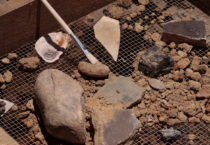
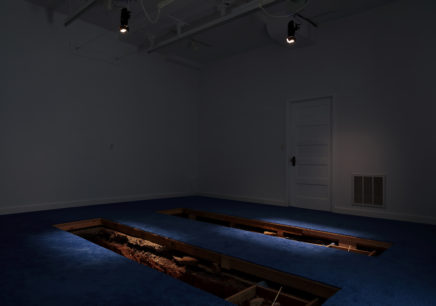
In the middle of a room in his home, Hewitt has cut through the floor and into the soil, staging an installation in two parallel trenches. At first, the trenches appear to be separate archeological digs, yet they are nearly identical, with sewer pipes and other objects—real and fabricated—embedded at various levels in the soil. Two oscillating lights move slowly along tracks suspended from the ceiling, creating shifting shadowplays in which two divergent groups of silhouettes are formed by the excavated objects. The installation in the trenches also becomes the basis of a two-channel video screened at the ICA as part of the accompanying exhibition. The home and studio will be open to the public for limited hours each weekend that the exhibition is open.


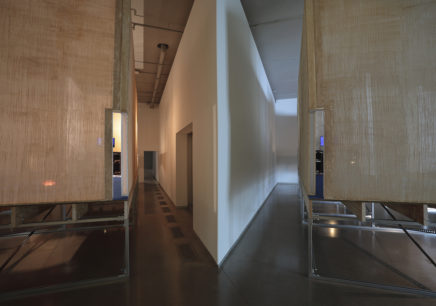
At the Institute for Contemporary Art
View GalleryHewitt will transform the Markel Center’s distinctive “v”-shaped galleries on the second floor into a pair of mirror-image installations. Each includes a landscape of waist-high platforms and a series of walls made of earth-stained, translucent fabric stretched over wooden frames. Amidst these scrims, a variety of sculptures appear to rise up through the platforms. Each installation will also contain one part of a two-channel video. Filmed from above to capture the shadowplay within each of the nearly identical trenches in Hewitt’s home, each evokes a different story. From one vantage, visitors will be able to see both installations simultaneously, occupying both the position of the fork in the road and the vanishing point. In addition, footage shot inside both the functioning and duplicate sewer pipes in those trenches form a two-channel video screened in a gallery behind one side of the installation.
Hewitt describes the work as a “parafiction” that conflates his family’s daily life in the building with that of the family of the last recorded landowner of the site, prior to the building’s construction in 1915. Hewitt’s excavation of the two trenches in the center of his studio reveals both real and fabricated artifacts that juxtapose two distinct familial histories. Through the ways that the objects relate to each other and to the site, as well as through the narratives suggested by the ICA installation and films, Hewitt joins the languages of archeology and history with daily rituals of living. He also uses strategies of imitation, symbolism, non sequitur, and surreal gesture to create a heightened state of attention.
Moving fluidly between language, shadows, and objects (such as rings, cooking utensils, coins, crackers, plates, strata, cosmetics, sunblock, eyeglasses, archeological equipment), Hewitt combines geologic, archaeological, and human relations. The work challenges us to examine our relationships to material histories, narratives, and labor. Through this project, Hewitt also builds on and enriches a long history of artists who have transformed their homes and/or studios into immersive and evolving works of art.
Shadows Are To Shade will open in June 2019, shortly after the ICA’s one year anniversary. It is a key part of this inaugural period as we explore different ways to support and share new art and ideas, and to connect to our surroundings and neighbors. We find it particularly resonant that this project—one of the first solo exhibitions organized by the ICA—supports a Richmond-based artist and VCUarts faculty member with an international profile. It is also Hewitt’s first solo exhibition in Virginia.
Corin Hewitt’s installations, performances, sculptures, photographs, and videos investigate relationships within architecture and domestic life. He also often draws on past experience as an electrician and plumber — a laborer who works in often unseen and utilitarian spaces. Hewitt received his BA from Oberlin College and his MFA from Bard College. He is Associate Professor of Sculpture and Extended Media at Virginia Commonwealth University.
Solo exhibitions of Hewitt’s work include Whitney Museum of American Art, MOCA Cleveland, the Atlanta Contemporary Arts Center, the Seattle Museum of Art, Laurel Gitlen, New York, Taxter and Spengemann, NY, and Western Bridge, Seattle. His work has been included in group exhibitions at the Astrup Fearnley Museum of Modern Art, Oslo; Extra City Kunsthal, Antwerp; the Memmo Foundation, Rome; the Sao Paolo Biennial in Brazil; the Whitney Museum, New York; the Henry Art Gallery, Seattle; Galerie Perrotin, Paris; with the Public Art Fund in New York; and the Wanas Foundation in Sweden. Hewitt was a recipient of the 2014–5 American Academy Rome Prize, a Guggenheim Memorial Foundation Fellowship in 2011, and a Joan Mitchell Fellowship in 2010. In 2015, Mousse Publications released a 300-page monograph, entitled Seven Performances featuring six years of work.
The ICA would like to extend heartfelt thanks to everyone who contributes their presence, voice, creativity, and care to this space and this project, including…
Production + Installation: Payton Baril, Samantha Best, Andy Clifford, Nick Crider, Nick Fagan, Warren Jones, Dylan Languell, Margo Lentz-Meyer, Ricardo Vincente Jose Ruiz, and Sandy Williams IV
Graphic Design: Meredith Carrington and Grace Hoffman
Visitor Services: Payton Baril, Malia Bates, Lillian Cook, Griffin Davis, Alyssa Evangelista, Kyla Garland, Laketch Haile, Madison Hall, Erin Hanas, Madeline Honig, Michelle Koppl, Madeline Maier, Kyle Maurer, Andrea Medina, Jessica Melgar, Dan Nemer, Devonte Robertson, Gus Rasich, Erica Taylor, Emerson Tedder, Luis Vasquez, and Tyler Wiseman
The ICA is committed to commissioning and supporting the production of new art and ideas. All ICA staff members contribute in important ways to making projects at the ICA possible. The credits above acknowledge specific contributions to the production and presentation of Corin Hewitt—from those on and beyond the ICA’s staff
The artist would also like to acknowledge the following people for their contribution to the project: Molly McFadden, Martine Hewitt, Karen Hewitt, Brandon McFadden, Mary Jo McFadden, Joan Gaustad, Perrin Turner, Stefan ScheerCook, Cassie Sheedy, Joy McMillian, Sam Morgan, Mikey Cabezas, John Huggins, Katie Lang, Natalie Schmitting, Orla McHardy, Chris Mahonsky, Alex Hayden, Sarah Cunningham, Salem Tsegaye, Lee Relvas, Jack Lundquist, andthe whole crew at the ICA at VCU.

 Closed
Closed

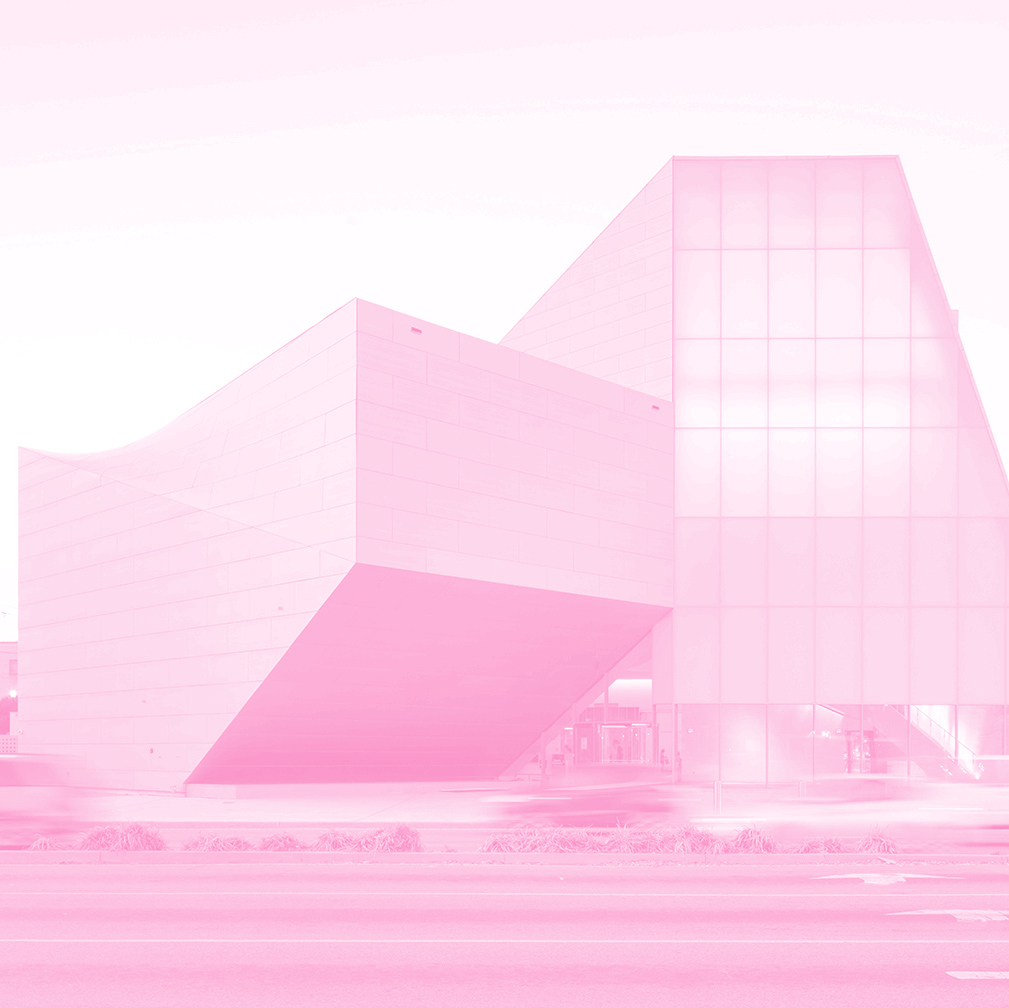 Area Map
Area Map 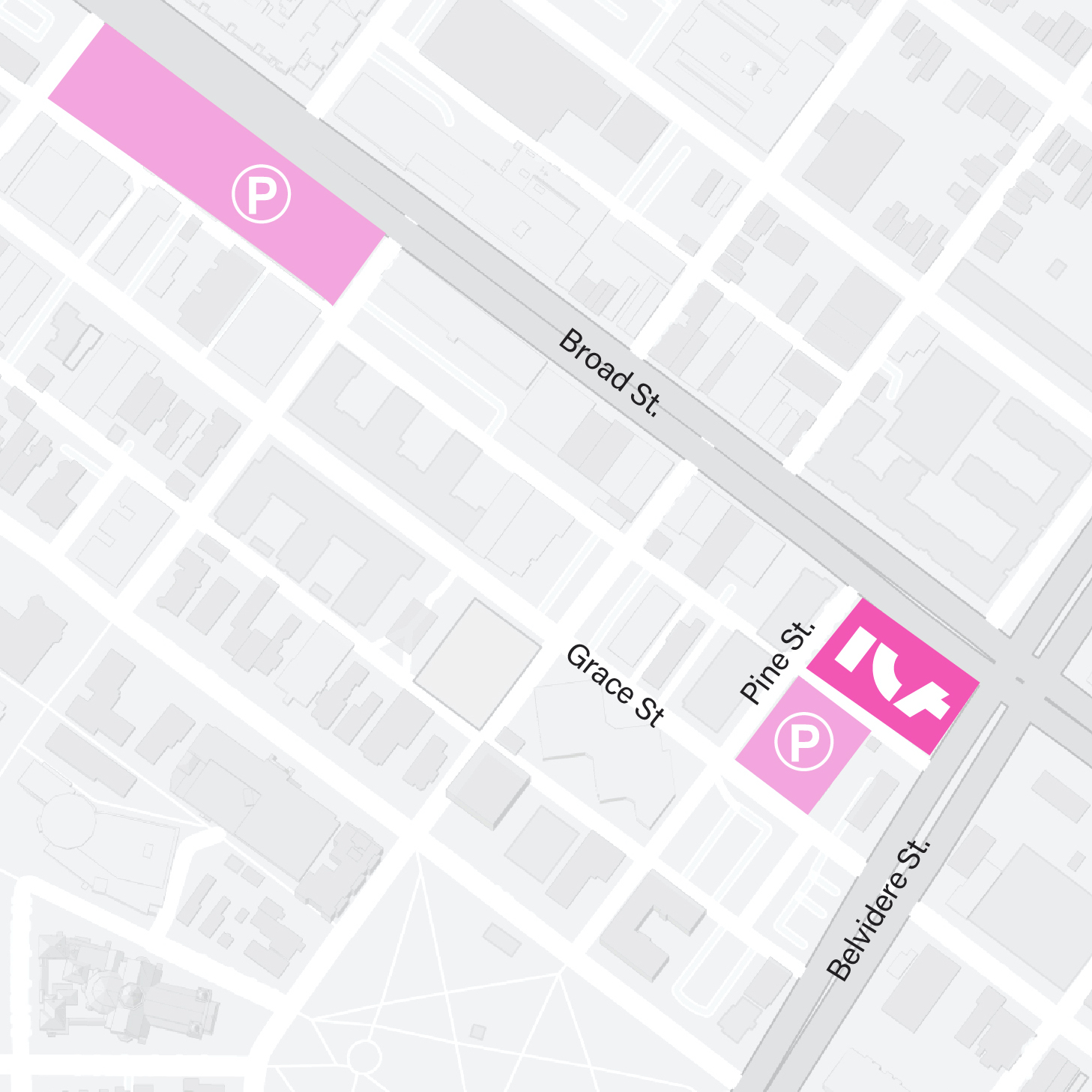 Parking
Parking 